Penn State-Behrend’s Tristan Talks About Lifeline to the MPSF
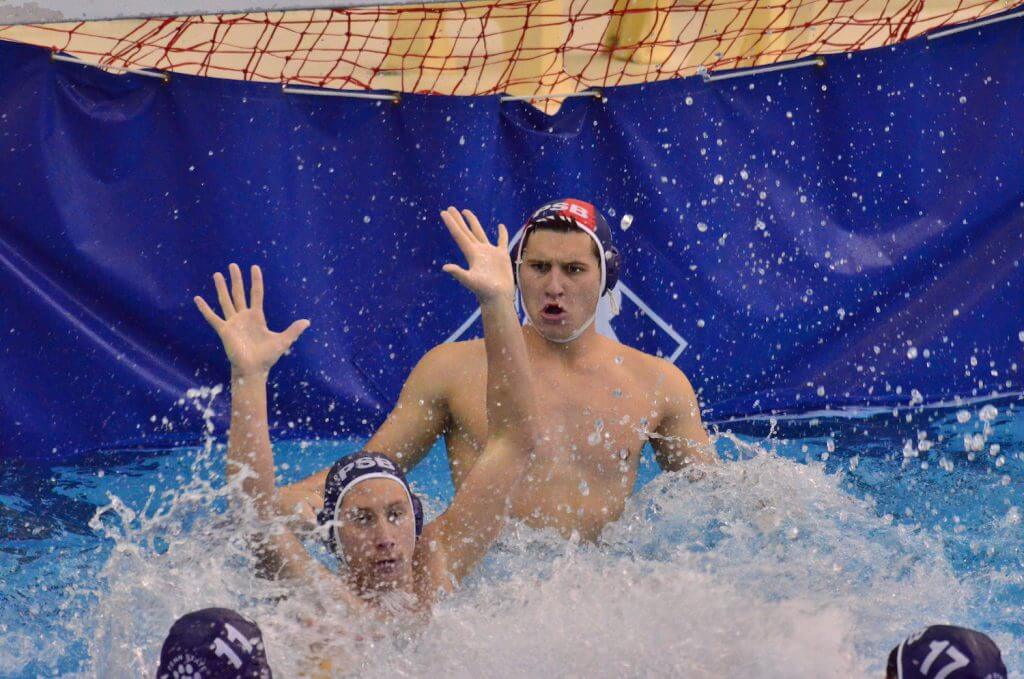
By Michael Randazzo, Swimming World Contributor
Two years ago, in one of the more unusual conference marriages in all of NCAA sports, the men’s water polo team from Penn State-Behrend joined the Mountain Pacific Sports Foundation (MPSF). This set up the incongruous situation last season where Cal, Stanford, UCLA and USC—the nation’s top four programs—were joined at the MPSF conference tournament by an 0-23 Lions team that subsequently lost to Cal, Stanford and USC by a cumulative score of 44-5.

Many programs were angry and—perhaps—envious of Penn State-Behrend’s bold decision, which head coach Joe Tristan acknowledged was both highly unusual but also necessary if the MPSF was to retain its automatic qualification for the NCAA Men’s Water Polo Tournament.
“Is it odd that a Division III East Coast team—that in any given year is not that great—is joining the MPSF?” he said. “Of course it is. It’s very odd. But you’ve got a conference that was dying, with nobody wanting to lift a finger to help.”
Now in his 14th year in Erie, PA, Tristan has seen a substantial bounce this season due to his program’s MPSF affiliation. Bringing in nine freshmen, including Matt Olimski, who earlier this season set the conference record for saves in a match (24) against Connecticut College, the Lions achieved a 6-12 record and a fourth-place finish at the Collegiate Water Polo Association’s Division III Championship, its best result in five years.
Prior to the 2017 MPSF Tournament this weekend—where three spots will be claimed in the upcoming NCAAs but not by Penn State—Tristan spoke to Swimming World about building a viable program in between the coasts, the Lion’s turnaround this past season and the benefits of being the worst team in the best men’s water polo conference in America.
What was it that drew you to the sport?
I’m originally from Southern California. My older sister Angel got into water polo when she was in high school. I always had to go to the pool with her.
One day [players from] the boys team asked: “Do you know how to swim? We need another player; get in the water.”
I’m a 13-year-old kid that’s barely pushing 90 lbs. [and I] go up against starters for Warren High School—guys averaging 6-3, 6-4. I liked it, and every day I asked my sister if I could go with her. And it went from there.
How did you end up at Penn State-Behrend?
I had just gotten back from the 2000 Olympic Trials, was living in Ypsilanti, had a job and was coaching water polo at Ann Arbor Huron High School (1997 – 2000). But I wanted something more. I wanted to get myself into the collegiate ranks.
I started the women’s club program at Eastern Michigan and coached for two years. I was looking for job openings and the position at Penn State-Behrend opened up. I had brought my club team to a tournament [there]—that’s how I knew the school—and the next year the job opened up.
Within two weeks I applied, got the job and was out here. It was a big decision but it was something I wanted to do.
14 years later I’m still going strong.
You arrive in Erie, Pennsylvania, not exactly a hotbed of the sport.
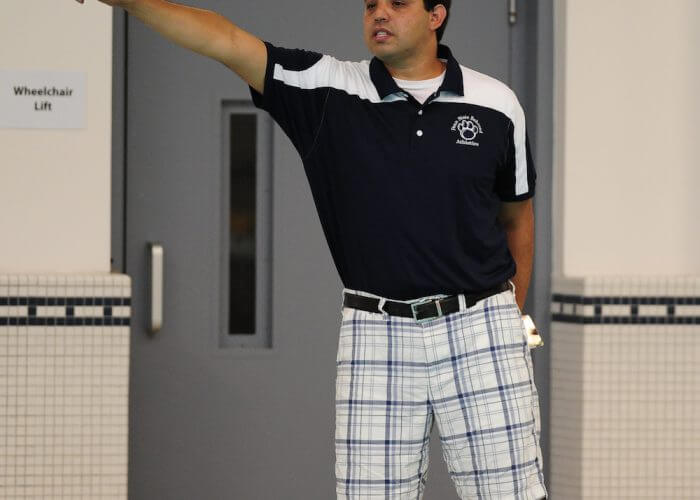
Joe Tristan Photo Courtesy: Penn State-Behrend Athletics
I have a full plate. I’m the head men’s and women’s water polo coach, I’m also the assistant swimming coach and I also teach.
In Pennsylvania water polo is not very big. Philadelphia has the majority of the teams; on this side of the state, Erie and Pittsburgh, we have five or six high school teams. We also have three colleges within 20 minutes of each other [Penn State Behrend, Gannon and Mercyhurst].
Erie is starting to become a destination because of these three colleges.
Polo is well-established on either coast but what are the prospects for polo’s growth in the middle of the country?
Illinois, Michigan and Ohio all have state-sponsored [high school] sports. McKendree, Austin, LaSalle, Wagner—all those colleges that have added water polo. Wittenburg [University], just outside of Dayton, OH, has added women’s water polo. There’s lots of growth, which is great for everybody. It’s creating a regional opportunity for prospective students.
A student athlete from Chicago no longer only has Erie as the closest location [for polo]. They can now look a few hours away to McKendree [in Lebanon, IL].
We do want kids from Pennsylvania but we’re looking all over—California, Florida, Michigan, Illinois, New York, Texas—to help us be better. That was the big thing after our 2016 season. My assistant at the time, Dave Matulis, and I agreed that: “We’ve got to knock this out of the park next year. If we don’t it’s going to be a big struggle.”
He did a great job in helping to get this program where it’s at today.
What draws talented water polo players to your program?
Being part of Penn State University, our academics are among the best. We have a lot of engineers on our men’s team—a strength of our campus—among 35 different majors. Engineering and business is what we’re known for.
One of my seniors, Ben Katsrsky, he’s a plastics engineer and he’s already sitting got two job offers on the board. He’s got another semester of school to go and he’s being hunted pretty heavily.
The kids who come in, they’re getting an engineering degree and before they even graduate they’ve got job offers. One of my players from a couple of years ago got a degree in mechanical engineering and he’s now working on a PhD in aerospace and doing research for NASA.
The next part is we develop a lot of athletes. We do get players like Matt Olimski, who came from a great program in San Diego Shores. He fell in perfectly. And the stats show that.
We also get guys like Troy Valkusky who, when he came in as a freshman, wasn’t a player that was going to start elsewhere. Four years later he’s one of our top goal scorers, he has the highest shooting percentage on our team this year, [and] he’s done some pretty good work for us. There was a development aspect there as opposed to players like Grant Garcia and Olimski. Garcia, our top goal-scorer, is just a talented player.
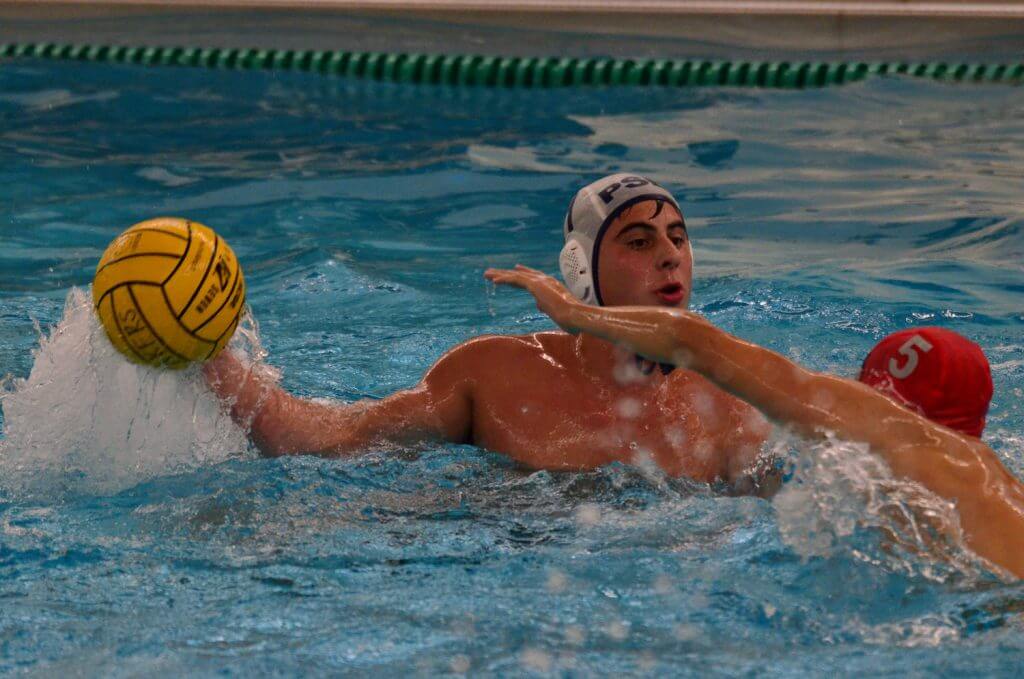
Grant Garcia. Photo Courtesy: Penn State-Behrend Athletics
A lot of the athletes who [come to us] are raw, they’re developing and we’re trying to bring out the best of them. Anthony Spoto, our career-leading goal scorer, we were able to take him to tryouts for the U.S. National Men’s team his senior year. We got lucky [with him] but he’s an engineer and he wanted the academics.
After a winless 2016 campaign, there are signs of progress for the Lions in 2017.
The biggest thing is we want more wins. This year was big for us because number one we needed to get guys on the team. Last year was an anomaly because in mid-summer we had 13 guys. [Then] Garcia got into a major car accident. He was driving a full-size truck that got hit by a semi-tractor. It was a major accident; his truck rolled 300 feet after it got hit.
That took out our leading goal scorer from the year before. Then we ran into some academic issues and another player had some financial issues and couldn’t return. We went from 13 to 10 players.
In October, we went to the [Gary Troyer Memorial] in Claremont and my starting goalie got a concussion in the first game. We’re down to nine. In the last game, our back-up goalie got kicked in the knee and it took him out for the season.
I’m thinking: “We’re going to the MPSF Championship for the first time with eight players.” My assistants and I agreed [that 2017] was the year that we’ve got to [improve].
We got on the phone and got the players we needed on the team to bring our numbers up—we have 19 players—that was the big component. We have two seniors so we’re building our freshman class around that.
It’s paying off for us. We’ve got a group of good, quality players that are looking at us for next year.
We want to get into the DIII Eastern Championships. Our goal is to be in the championship game.
Your level of competition is perfectly matched to schools that compete in the Mid-Atlantic Water Polo Conference, West Division. Do you have second thoughts about affiliating with the MPSF?
A year before we joined My AD Brian Streeter asked: “What are your thoughts about joining the MPSF?” I laughed and said: “I don’t know. I’ve never thought of it.” At the time, we were still in the CWPA Southern conference.
There was not much of a big change in respect to who we were playing. Our first-round [conference tournament] game was going to be Princeton or the Naval Academy—which was going to be a 20-1 or 20-3 loss for us. Then our next game would be against a [George Washington] or Gannon or Mercyhurst. Then we’d follow suit with a Washington & Jefferson or a Monmouth.
I don’t regret the decision at all. It’s been a positive component of our program. It’s funny because I fought for what the CWPA has now. It’s something that I would throw out to the league office.
It’s hard. You sit back and you realize that here’s our comparable teams and we can do some different things. The CWPA has a Mid-Atlantic West Tournament, and then the top two teams go on and they still have to play Bucknell or Hopkins or Navy. It’s still the same component that we’re going to be dealing with at the MPSF. The difference? The MPSF ranks 1, 2, 3 and 4. [The CWPA] ranks 10, 12, 15 and 18. That’s obviously the big difference.
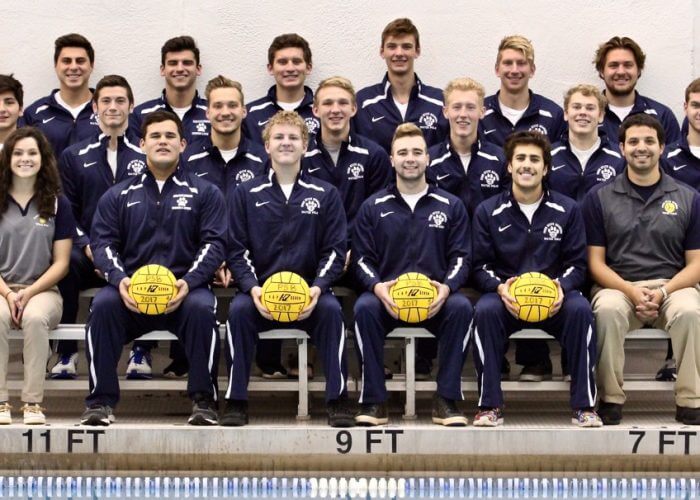
Penn State-Behrend Athletics
We play a lot of our games locally because we are a Division III school. We don’t have a budget that allows us to freely go to California every year. When we do go to California in October our athletes pay the bill. When we go for the MPSF our budget covers that.
Our guys are excited to play. One of the things they’ve been talking about the past few weeks is how they feel so much better now that they have players, they have subs, they have all these different things that they didn’t have last year.
We set goals for this weekend coming up; individual and team goals. That is a component of what we do as a team. No matter what we perceive the outcome to be, our goals are imperative to our success.
How does your MPSF membership ultimately help Penn State Behrend to become one of the best DIII programs in the country?
When the Golden Coast Conference formed and the CWPA started that formation and the MPSF was looking for teams, and we decided to make that move, we were questioned a lot. I had both worlds coming at me; some teams were proud of us. Other teams said: “You guys are so dumb. We hate you now. We don’t ever want to pay you again.”
I just roll with the punches. No matter what we do someone’s not going to be happy.
For me, I look at what’s in the best interest of water polo. Letting the MPSF die—will that help NCAA water polo? You ask one coach and they’ll say: “Yes, because then we don’t have to deal with them.” You ask another and they’ll say: “No, I think that’s a very bad idea.”
Let’s lift a lifeline for them. Let’s give them a shot. Ultimately, they still have to have six teams when it’s all said and done. Everything we’re doing doesn’t matter unless we get the six teams. Even if a sixth team adds next year, [the MPSF] still has to sit out a year without an AQ [automatic qualifier].
Everybody gets what they want for one year and then after that year the MPSF will get their AQ back.
Most people say that [the move] did help us. Look at the recruiting class that we brought in. look at our team; they’re doing a great job.
I don’t want to say that it was all the MPSF’s doing because then it seems that we did nothing. That’s not true. There was a lot of time we spent making sure we got the group of guys that we got.
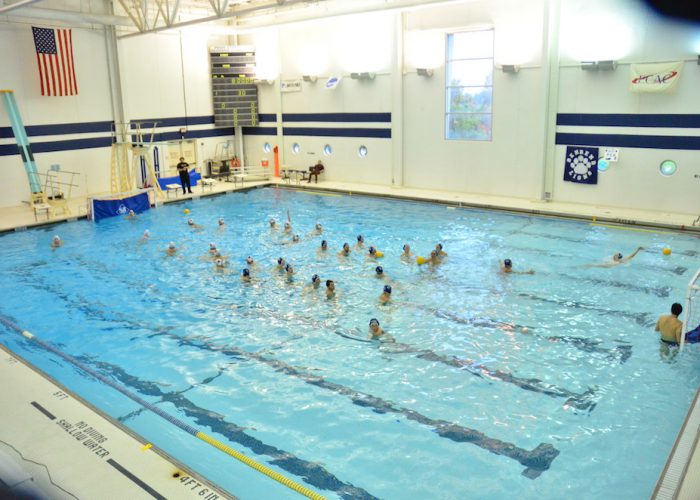
In the Lion’s Den. Penn State-Behrend Athletics
Did we get an influx of recruits who were MPSF or GCC material? We did get more people contacting us in that respect. But we didn’t get those guys because they’re looking at scholarship money that we didn’t have.
I spoke to them, and if I talk to them enough maybe they’ll come. Maybe I get a guy who should have gone to Cal on my team. Then that’s a great thing [Laughs].
But that didn’t happen. But did we get some great players? Yes! Players like Matt Olimski, Davis Kraft, Bruce Bersiek, Greg Kinzler. All these kids that came in did a great job for us.
There was one incident this year where a tournament director didn’t want us there because we were part of the MPSF. That’s fine with us; in fact, I felt it helped our schedule because it allowed us to get some more practices in.
We roll with the punches. There are teams who do want to play us. In the end, it isn’t really a factor for us joining the GCC or the CWPA because when NCAA rankings roll out, you still have to do play-in games.
Does access to MPSF coaches help you as you develop your program and prepare your athletes?
Definitely. Adam [Wright], Kirk [Everist], Jovan [Vavic], John [Vargas]—they’ve all been very supportive and helpful. They’ve offered opportunities to come and sit with them for a week and watch practices. During the summers, my California guys need places to practice—[MPSF coaches] have offered to get them in and get them training.
I’m a swimming coach as well and have worked with and swam under some of the best swim coaches in the world—Peter Linn at Eastern Michigan, Jon Urbanchek and Jim Richardson when they were with Club Wolverine, Daniella Irle when she was over at Fresno State, Don Watkins at Bellflower Aquatics Club—one of the things I learned during my swimming tenure, which is no different than what I’m doing now, there’s always times and ways to learn.
I’m a pretty bold person so I’ll walk up sometimes and say: “I saw you guys doing this. How can I get my team involved in this type of offense or defense?”
They’re great resources and I’m proud and honored to be a part of the MPSF.



